- October 7, 2024
- Posted by: Viacame Communication
- Category: Uncategorized
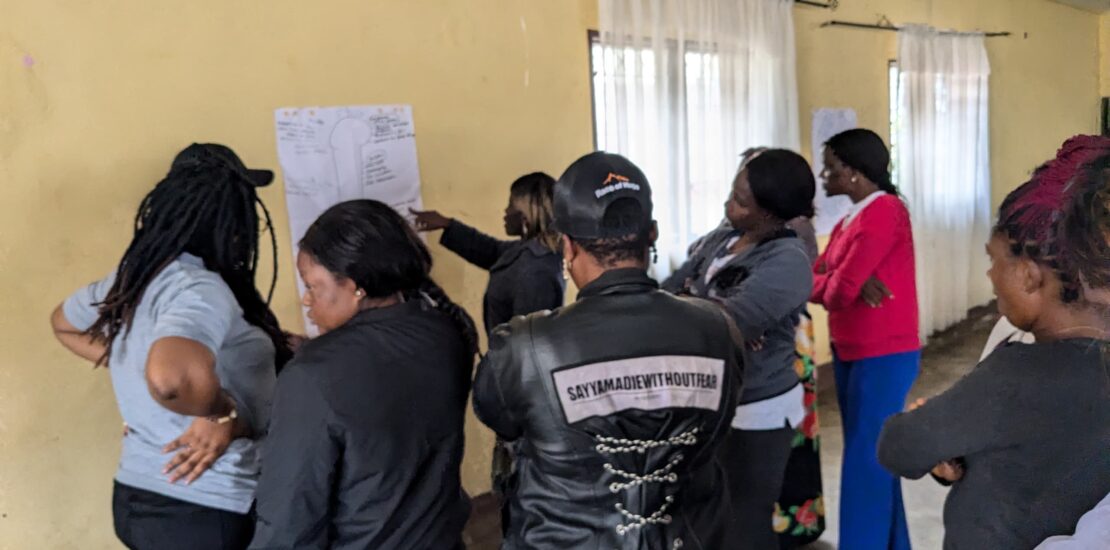
Problem and solution trees are effective tools for analyzing and addressing complex issues, including sexual and reproductive health (SRH) in grassroots communities. These tools help identify root causes and develop targeted interventions, leading to improved health outcomes and overall community well-being.
How Problem and Solution Trees Work
- Problem Tree: This tool helps identify the root causes of a central problem and its effects. For SRH, the central problem might be high rates of teenage pregnancies or sexually transmitted infections (STIs). The roots represent underlying causes such as lack of education, cultural taboos, and limited access to healthcare. A Problem Tree, is also known as a Situational Analysis or Problem Analysis, is a visual representation that maps out the causes and effects of a central problem. The structure of the Problem Tree includes:
– Roots: Represent the root causes of the problem.
– Trunk: Represents the main problem.
– Branches and Leaves: Represent the effects or consequences of the problem.
2. Solution Tree: This tool builds on the problem tree by identifying potential solutions to the root causes. For example, solutions might include comprehensive sex education, community health programs, and improved access to contraceptives.
The Use of Problem Tree in Organizations, especially those in health care, often encounter intricate problems that require more than a surface-level solution. Whether dealing with high patient mortality rates, understaffed health facilities, or poor community health outcomes, the Problem Tree analysis allows these organizations to tackle the deeper issues.
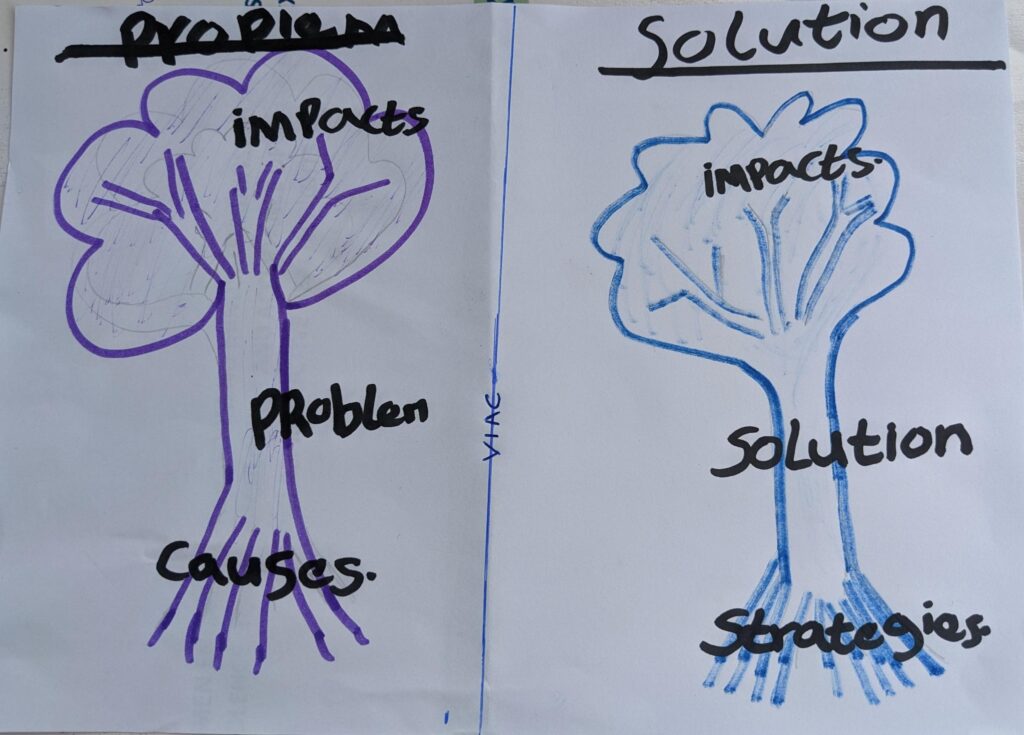
The Problem Tree is particularly valuable because:
1. Facilitates Critical Thinking and Collaboration: By encouraging teams to delve into the root causes of an issue, the Problem Tree helps generate collective understanding and diverse perspectives. Different stakeholders, including medical staff, administrative teams, and even community members, can contribute to a shared vision of the problem and its solution.
2. Organizes Complex Problems: Many health-related issues have multiple interrelated causes and effects. A Problem Tree helps break down these complexities into manageable components, making it easier to focus on addressing each issue strategically.
3.Prioritizes Actionable Causes: Not all causes are equal. Some may be more feasible to address in the short term, while others may require longer-term strategies. The Problem Tree helps prioritize which causes should be tackled first for maximum impact, allowing for more efficient resource allocation.
4. Aids in Monitoring and Evaluation: By visualizing the problem’s causes and effects, health facilities can better track their progress in solving the issue. As interventions target specific root causes, the Problem Tree can also be used to evaluate whether these actions are reducing the problem’s effects, providing a framework for continuous improvement.
Problem tree and community health personnel’s
Problem Tree analysis is vital for health facilities, helping improve patient outcomes, address public health crises, and enhance resource management. By identifying the root causes of issues such as staff shortages, insufficient supplies, or poor preventive care, facilities can target interventions more effectively. This method also promotes proactive healthcare, reducing the incidence of preventable diseases through education and outreach. Overall, Problem Tree analysis strengthens public health systems, improving service delivery, and contributing to better long-term health outcomes for the community.
Enhancing Youth Utilization of SRH Services in Community Health Facilities
As part of VIAC’s mission to ensure the youth’s utilization of youth-friendly services in community health facilities, we recently organized a two-day training for community health facility providers. During this training, we focused on identifying and addressing the root causes of the underutilization of Sexual and Reproductive Health (SRH) services using problem and solution analysis trees. Divided into three groups, the participants analyzed the reasons behind the poor utilization of SRH services in their communities and proposed strategic solutions.
Addressing the Poor Utilization of Sexual and Reproductive Health (SRH) Services in Communities
In a practical collaborative exercise aimed at improving the utilization of sexual and reproductive health (SRH) services in grassroots communities, three groups of health personnel worked together to identify key barriers and propose practical solutions. Using problem and solution tree analyses, they uncovered the root causes of poor service utilization and developed strategies to address them.
Identified Causes
The groups pinpointed several common reasons behind the underutilization of SRH services in local health facilities. These included:
- Lack of healthcare facilities and personnel
- Unwelcoming attitudes and rude behavior from healthcare workers
- Lack of trust and confidentiality
- Fear of medical procedures, such as injections
- Limited knowledge about SRH services among community members
- Financial barriers and stereotypical views towards healthcare
Proposed Solutions
To tackle these issues, the groups devised a set of strategies aimed at increasing the use of SRH services in the community. Key solutions included:
- Partnering with NGOs to enhance resources and outreach
- Organizing sensitization campaigns to raise community awareness about SRH services
- Creating dedicated spaces for SRH services in health facilities
- Improving communication skills and providing capacity-building training for healthcare personnel
- Offering free consultations and subsidized medications to reduce financial barriers
- Conducting home visits to reach underserved populations
Positive Outcomes
By implementing these solutions, the groups anticipated several positive effects:
- A decrease in the number of STIs, unsafe abortions, and maternal deaths
- A reduction in teenage pregnancies
- An increase in hospital revenue due to improved service utilization
- Overall improvements in living standards and literacy rates within the community
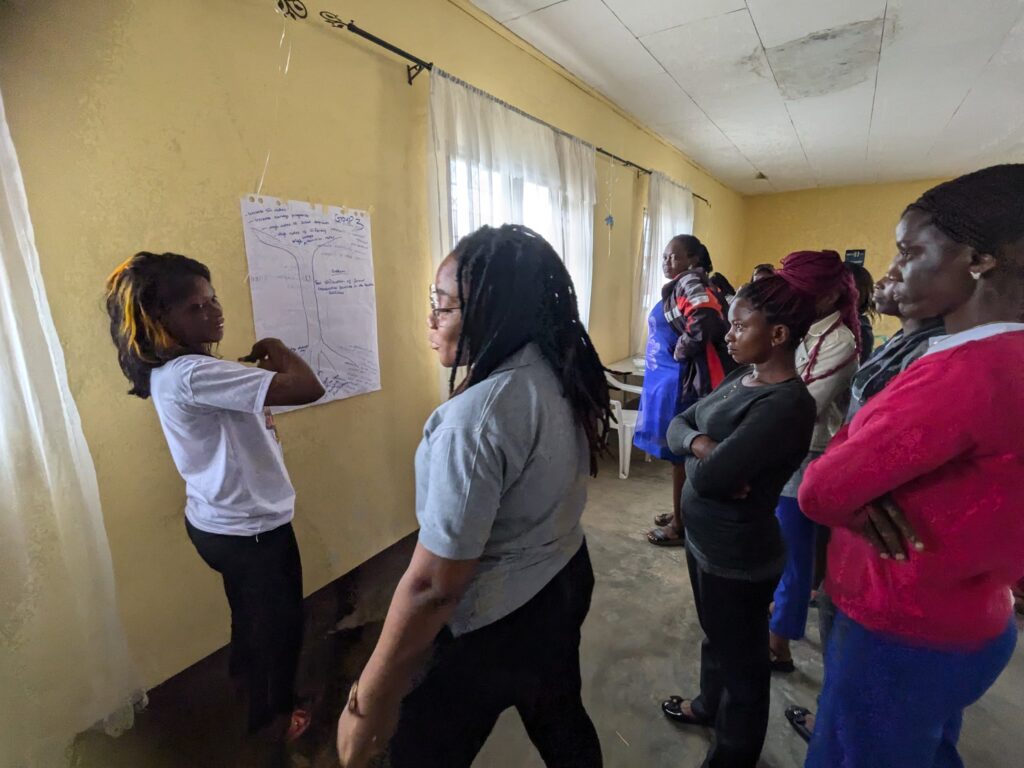
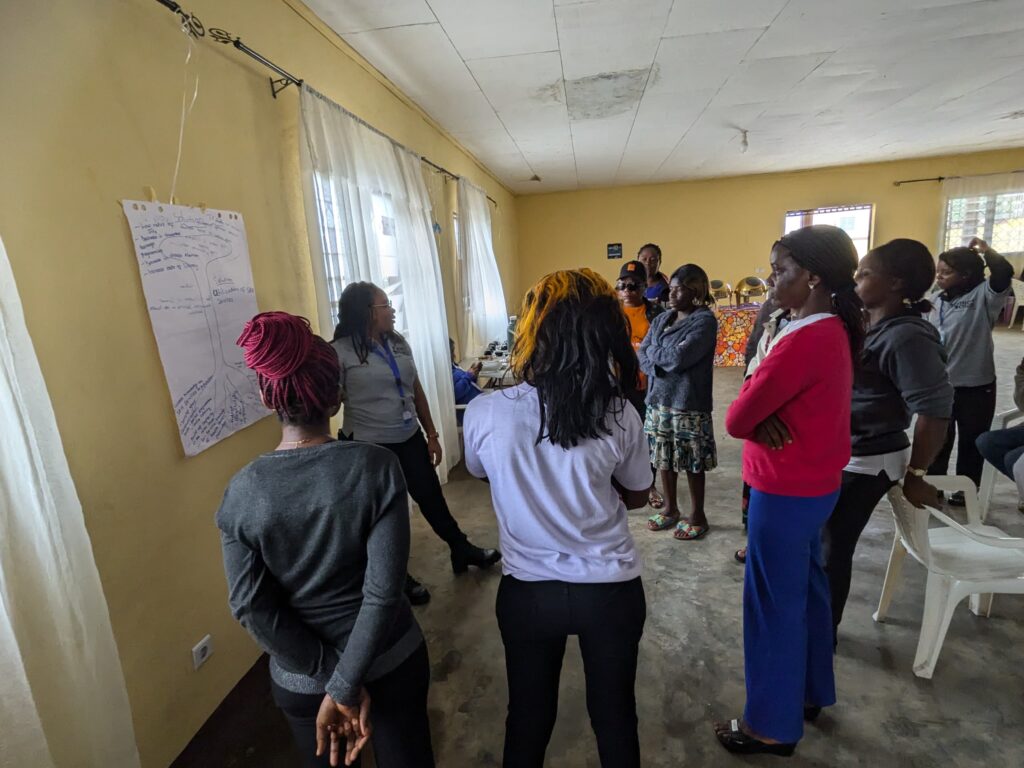
Importance of training health providers in communities on using the problem tree to tackle SRH
Training community health workers (CHWs) to use the problem tree approach to address sexual and reproductive health (SRH) issues can offer several benefits for improving health outcomes in communities. Here’s why:
- 1. Holistic Problem Analysis: The problem tree helps CHWs break down complex SRH issues into root causes, consequences, and interrelated factors. This enables them to address not just the symptoms but the underlying causes of health problems, such as cultural norms, lack of education, or poor access to services.
- 2. Community-Centered Solutions: By engaging the community in creating a problem tree, CHWs can gather input from local stakeholders. This promotes the development of solutions that are culturally appropriate and supported by the community, improving the likelihood of successful interventions.
- 3. Structured Problem Solving: The problem tree provides a clear, visual method for organizing thoughts and ideas. This helps CHWs to systematically approach SRH issues and ensures they cover all aspects of a problem, making it easier to design targeted, effective interventions.
- 4. Improved Decision-Making: With a clearer understanding of how different SRH issues are connected, CHWs can prioritize resources and actions effectively. They can focus on the most impactful interventions that will yield the best results for the community.
- 5. Capacity Building and Empowerment: Training CHWs in this method enhances their analytical and facilitation skills, empowering them to take a more active role in problem-solving. This not only benefits their work on SRH issues but also strengthens their overall community health work. By using the problem tree tool, CHWs can enhance their effectiveness in tackling SRH challenges, leading to more sustainable and meaningful improvements in community health.
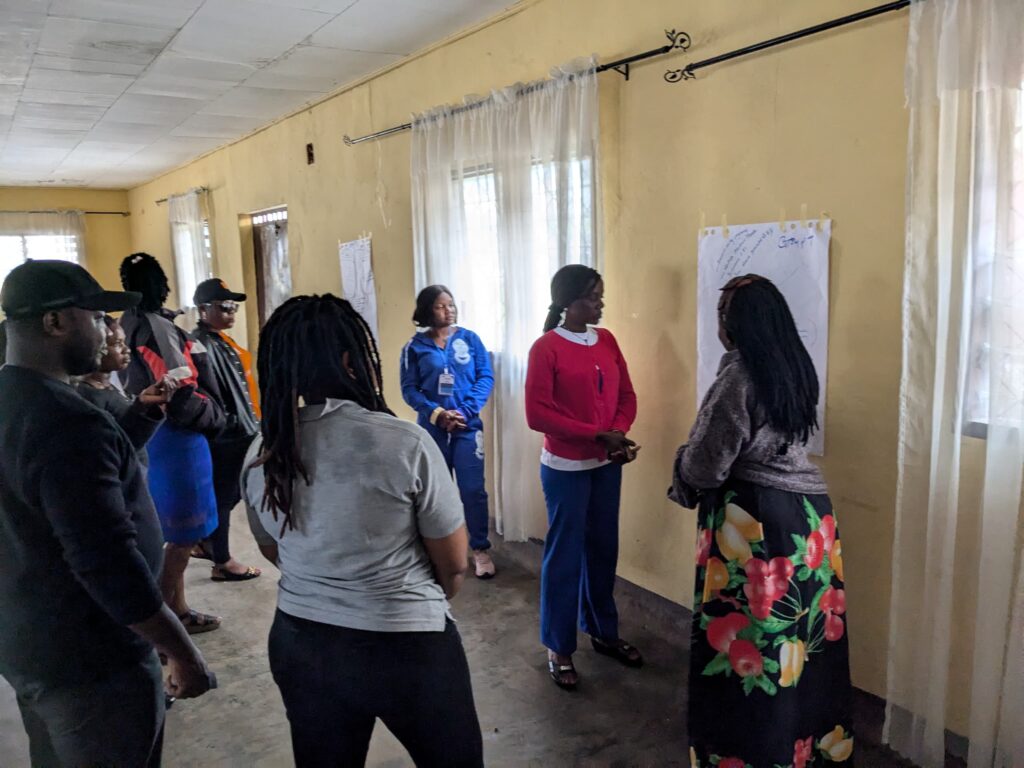
How Problem Tree Analysis Contributes to the Betterment of the Community
The impact of health facilities on the broader community is significant, and using Problem Tree analysis can lead to widespread benefits for the community in several ways:
- 1. Strengthens Public Health Systems ;By identifying and addressing the root causes of systemic problems within health facilities, the Problem Tree analysis strengthens the overall healthcare infrastructure. Better-managed health facilities lead to improved service delivery, which directly translates to better healthcare for the community. When healthcare systems are robust, communities experience lower mortality rates, higher life expectancy, and improved quality of life.
- 2. Promotes Community Involvement and Ownership; Problem Tree analysis is often conducted in collaboration with various stakeholders, including community members. This approach fosters a sense of involvement and ownership, as people feel that their concerns are being heard and addressed. When communities are involved in identifying and solving health problems, they are more likely to support and engage with health initiatives, leading to greater success in public health campaigns and interventions.
- 3. Addresses Social Determinants of Health ;Many community health issues are deeply rooted in social and economic factors, such as poverty, education, and housing. Problem Tree analysis encourages health facilities to look beyond the immediate medical issue and consider the broader social determinants of health. By addressing these underlying factors, health facilities can contribute to long-term improvements in community well-being, such as reducing the incidence of preventable diseases and improving overall quality of life.
- 4. Enables Holistic Community Development ;Health is closely linked to other areas of community development, such as education, employment, and infrastructure. When health facilities use Problem Tree analysis to solve systemic issues, the benefits extend beyond healthcare. Healthier communities are more productive, experience higher levels of education and economic growth, and require fewer emergency health interventions. This holistic improvement fosters sustainable community development
conclusion
Problem and solution trees are valuable tools for improving sexual and reproductive health in grassroots communities. By identifying root causes and developing targeted interventions, these tools can help overcome common challenges faced by native communities, leading to better health outcomes and overall community well-being.
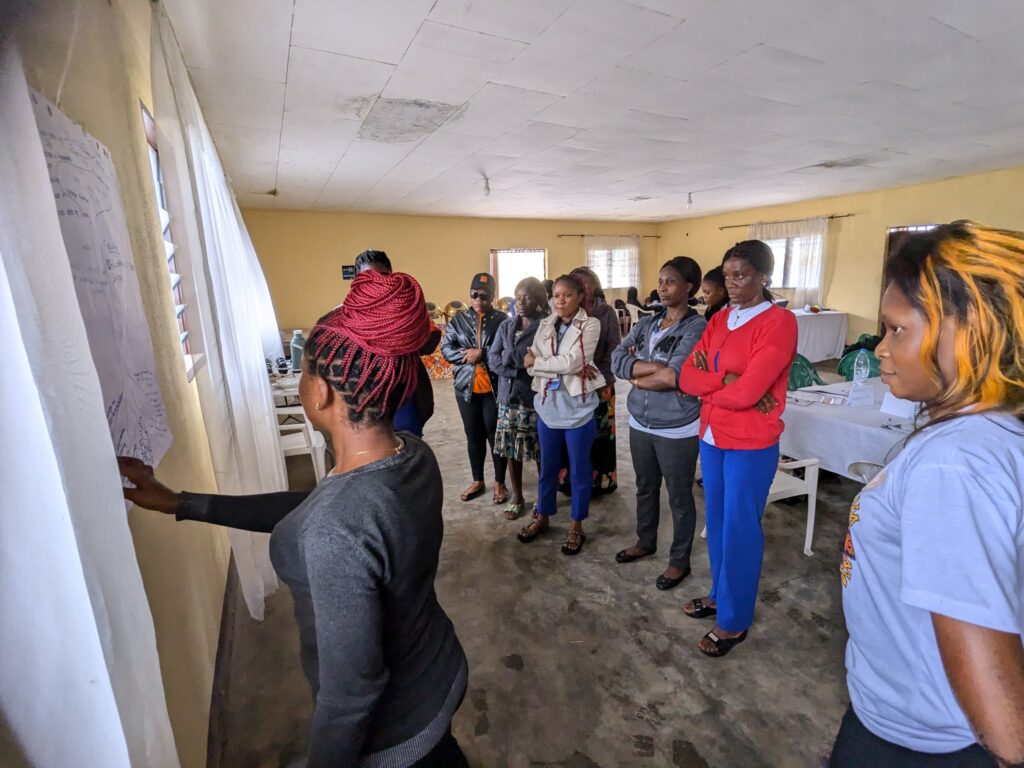
- (1) Problem and solution trees: a practical approach for identifying …. https://academic.oup.com/heapro/article/23/4/345/629180.
- (2) Built on Tradition: Sexual Health Education for Indigenous Youth. https://magazine.publichealth.jhu.edu/2022/built-tradition-sexual-health-education-indigenous-youth.
- (3) What Are the Major Threats to Sexual and Reproductive Health and Rights?. https://www.globalcitizen.org/en/content/sexual-reproductive-health-rights-threats/.
- (4) The sexual and reproductive healthcare challenges … – BMC Public Health. https://bmcpublichealth.biomedcentral.com/articles/10.1186/s12889-024-17916-0.
- (5) undefined. https://doi.org/10.1093/heapro/dan027.
- (6) Our Network — Native Youth Sexual Health Network. https://www.nativeyouthsexualhealth.com/network.
- (7) Native Youth Sexual Health Network. https://www.nativeyouthsexualhealth.com/.
- (8) ‘Women’s and girls’ sexual and reproductive health and rights in …. https://www.ohchr.org/sites/default/files/Documents/Issues/Women/WG/ReproductiveHealthRights/CSOs/nativewomensassociationofcanada/submission.pdf.
- (9) SEXUAL AND REPRODUCTIVE HEALTH AND RIGHTS OF INDIGENOUS PEOPLES. https://www.un.org/en/ga/69/meetings/indigenous/pdf/IASG%20Thematic%20Paper_Reproductive%20Health%20-%20rev1.pdf.
- (10) Disparities and Resilience Among American Indian and Alaska Native …. https://www.cdc.gov/hearher/aian/disparities.html.
